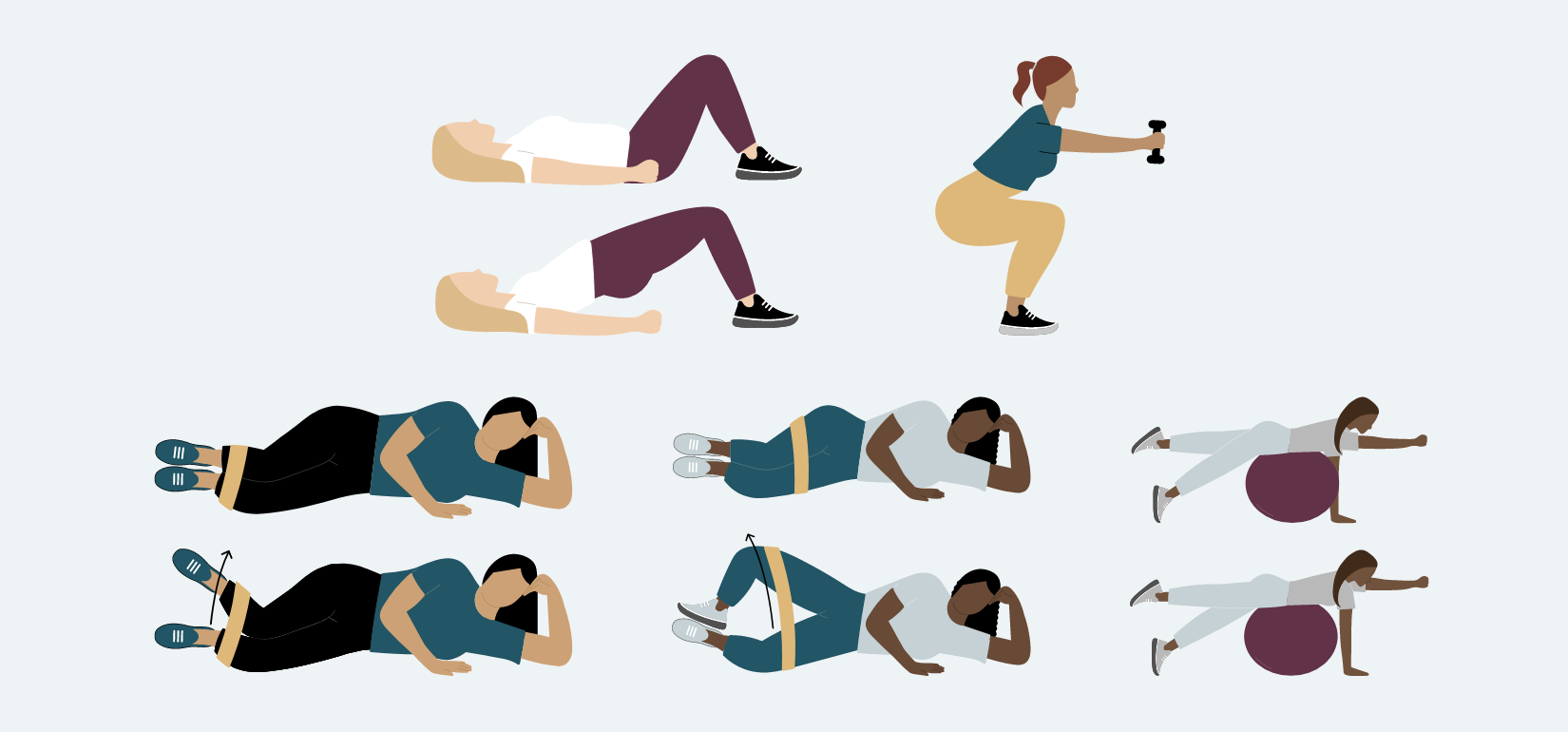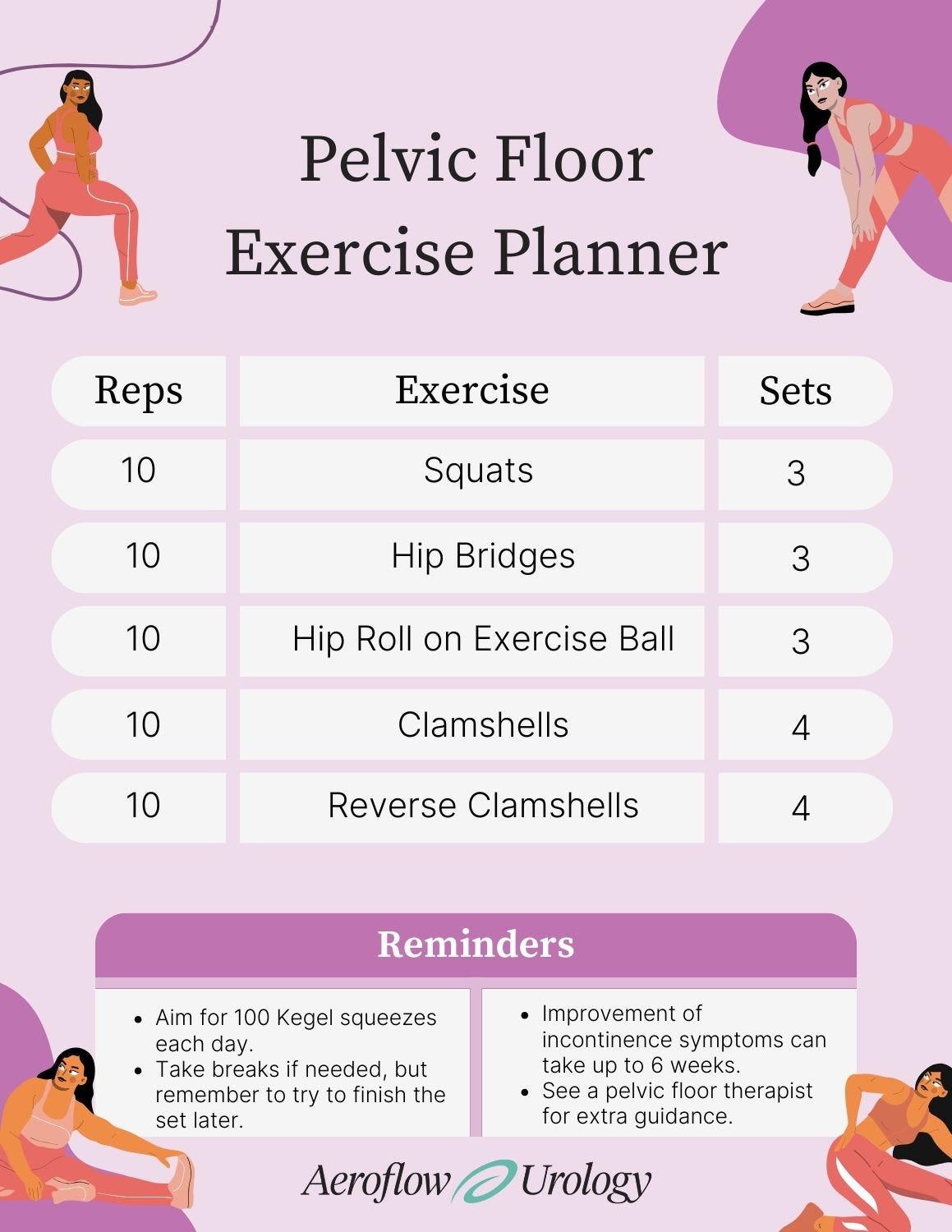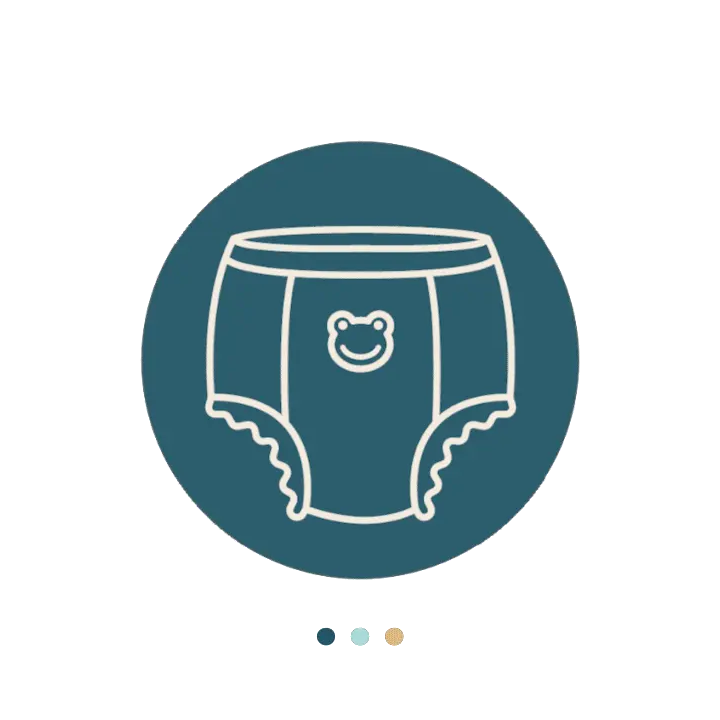Key Takeaways:
- Your pelvic floor is like a hammock that holds all your pelvic muscles safely in place.
- Pelvic floor exercises help to improve bladder and bowel control, decrease the risk of pelvic organ prolapse, and improve sexual health.
- Kegels aren’t the only exercises you can do! Squats, hip bridges, hip rolls, and clamshells strengthen your pelvic floor and decrease bladder control issues.
Jump To:
What Are the Pelvic Floor Muscles?
How to Locate Your Pelvic Floor Muscles
What Are the Benefits of Pelvic Floor Muscle Training?
At What Age Should I Start Doing Pelvic Floor Exercises?
Tips for Starting Pelvic Floor Exercises
The Best Pelvic Floor Exercises for Women
Free Bladder Control Products Through Medicaid
INCONTINENCE PRODUCTS THROUGH INSURANCE:
Aeroflow Urology is in-network with many Medicaid and Medicaid-managed insurance plans and is accredited by Medicaid. Complete our Eligibility Form, and we’ll automatically check to see if your plan covers incontinence supplies. ***Must meet certain requirements to qualify.***
You will also receive the care and attention every person managing incontinence deserves: A personalized list of 100% insurance-covered incontinence supplies, a dedicated Continence Care Specialist you can contact during business hours, a user-friendly online portal for easy monthly reordering, and educational content.
Get the continence care you need with the dignity you deserve. Join the Aeroflow Urology family today! It only takes 2 minutes to get started.
What Are the Pelvic Floor Muscles?
Your pelvic floor muscles act as a hammock that safely holds all your pelvic organs in place. This cohesive group of muscles is an essential part of organ function and controls many bodily functions, including urinary control, bowel control, and sexual function.
In the female anatomy, the pelvic muscles attach to your pubic bone, wrapping around to the urethra and vagina. They continue wrapping around to your rectum and tailbone. The pelvic floor muscles reach out to the sides of your hips and attach to the pelvis and core muscles.
Check Your Eligibility
In 2 easy steps!
Discover the bladder control supplies covered by your Medicaid plan.
How to Locate Your Pelvic Floor Muscles
You may have been told to find and identify your pelvic floor muscles by stopping your flow of urine mid-stream, but don't do this! Stopping your urination mid-stream will only train your bladder not to empty completely, which can lead to various urinary and bladder issues, such as urinary incontinence (UI) (loss of bladder control).
Although it can be challenging to find the right muscles, there are ways to safely and accurately identify them.
How to locate your pelvic floor muscles:
- Place a finger into your vagina and try to squeeze your finger with your pelvic floor muscles.
- Try to squeeze and lift your finger toward your belly button. This squeezing and lifting motion specifically targets your pelvic muscles, so you should be able to feel them while performing this action.
If, after trying to locate your pelvic muscles using this method, you are still concerned that you're not squeezing the correct muscles, a pelvic floor physical therapist (PFPT) can assist you in identifying them and address any other pelvic health concerns you may have.
What Are the Benefits of Pelvic Floor Muscle Training?
1. Improves Incontinence Symptoms
Leaking urine when sneezing, lifting heavy objects, or exercising (stress incontinence) and experiencing frequent, sudden urges to urinate (urge incontinence) are all symptoms of UI and can be signs of tight or weak pelvic floor muscles. Due to pelvic floor dysfunctions, you may also experience fecal incontinence (loss of bowel control).
Maintaining a healthy regimen of pelvic floor exercises or stretches can significantly improve incontinence symptoms over time and prevent them from developing.
2. Decreases Risk of Pelvic Organ Prolapse
Pelvic organ prolapse (POP) can occur when your pelvic floor muscles and the tissues around the area are too weak to support your internal organs, such as the vagina, cervix, uterus, and rectum. Pelvic floor exercises help strengthen those tissues and muscles and keep pelvic organs in place.
3. Decreases Risk of Constipation
General exercise is good for improving constipation, and when you target your pelvic floor muscles with pelvic floor exercises, it can decrease your risk of developing constipation.
4. Improves Sexual Health & Function
Pelvic floor exercises can increase blood flow in the pelvic floor and vagina, which can improve overall sexual health and sexual function.
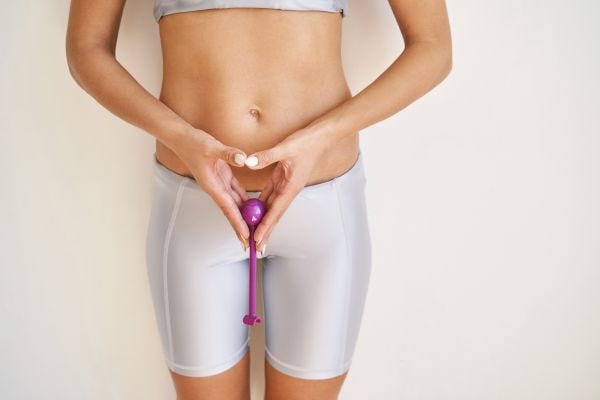

At What Age Should I Start Doing Pelvic Floor Exercises?
For those with female anatomy, puberty is a time when inserting tampons or menstrual cups into the vagina can sometimes be difficult or uncomfortable.
When this insertion is accompanied by pelvic pain (for women of any age), it can be due to an issue with the pelvic floor. Because of this, we recommend beginning pelvic floor muscle exercises at puberty.
Tips for Starting Pelvic Floor Exercises
- Blend pelvic floor exercises into your regular exercise routine. Incorporating pelvic floor exercises into your existing workout routine is easy because many exercises activate and strengthen the pelvic floor.
- Exercise your pelvic floor every day. Because the pelvic floor muscles are similar to your abdominal muscles, you can exercise them daily.
- Start with 3 sets of 10 repetitions. Regarding repetitions, performing 3 sets of 10 reps is an excellent place to start.
- Take breaks between sets if needed. If you begin a second set of pelvic floor exercises and you're struggling to continue, it's more than okay to take a break! Finish all 3 sets. If you take a break between sets, remember to come back later to continue where you left off.
- Be mindful of soreness. It's important to note that your pelvic floor muscles can get sore and may not feel like the typical soreness you're familiar with; pelvic floor soreness can feel like heaviness or pressure in the lower abdomen and genitals.
- Exercise to the point of fatigue but not discomfort! Once you establish a pelvic floor exercise routine, you should continue exercising the muscles to the point of fatiguing them without experiencing extreme discomfort.
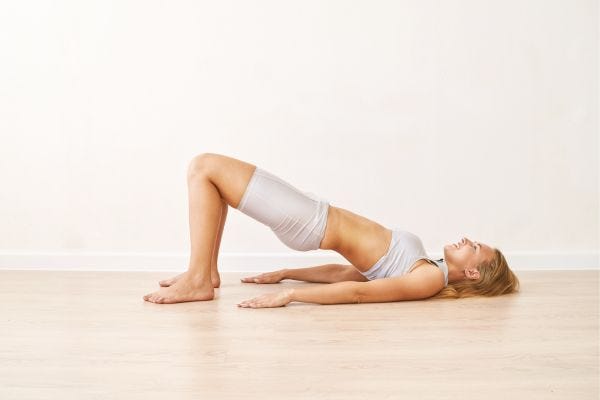

- Aim for 100 Kegel squeezes each day. The optimal number of Kegel squeezes per day is 100 squeezes, but we recognize that this may only be realistic for some individuals. Any amount you can do daily is excellent for your pelvic floor, so don't worry if you can't reach 100 daily!
- Be patient and stay consistent. If you're experiencing symptoms of incontinence or other bladder control issues, improvement of symptoms can take up to 6 weeks after beginning consistent pelvic floor exercises.
- Visit a pelvic floor therapist if symptoms don't improve. If symptoms worsen or do not improve in 6 weeks, we recommend that you see a pelvic floor physical therapist.
The Best Pelvic Floor Exercises for Women
Try out these pelvic floor exercises to strengthen your pelvic floor. You can either do 1 set and 10 repetitions of each exercise or try 3 sets and 10 reps of a single exercise.
Squats (3 sets, 10 reps)
How to:
- To properly squat, begin by standing with your feet shoulder-width apart. Your toes should be pointed straight forward with your arms comfortably in front of you.
- Send your hips back while lowering your body to the ground. Pause when your thighs are parallel to the floor while keeping your chest up.
- Squeeze your pelvic floor muscles as you lift back up into your starting position.
- It is essential to have proper form, ensuring the knees do not bend past your feet. You can also add a dumbbell or kettlebell to your squat to increase the intensity.


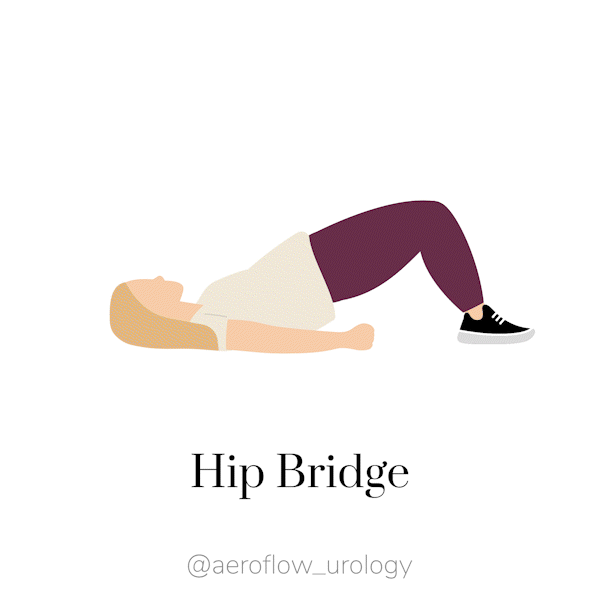

Hip Bridges (3 sets, 10 reps)
How to:
- To complete a hip bridge, begin by laying on your back with your feet planted firmly on the floor with your knees bent.
- Scoot your feet as close to your bottom as possible while still maintaining a comfortable position.
- Lift your hips off the floor to form a 45-degree angle from the ground, forming a right triangle with your back, knees, and the floor.
- As you lift into a 45-degree angle, squeeze your glutes and pelvic floor muscles, then return to your starting position with your back flat on the floor.
Hip Roll on Exercise Ball (3 sets, 10 reps)
How to:
- For this exercise, you will need an exercise ball or other flat surface to balance on.
- Sit on the ball with your feet planted firmly on the ground.
- Without moving your knees, roll your hips clockwise. Try not to move your shoulders or any other part of your body besides your hips while rotating.
- Engage your core and pelvic muscles while rotating.
- Do 10 clockwise rotations, then do 10 counterclockwise.
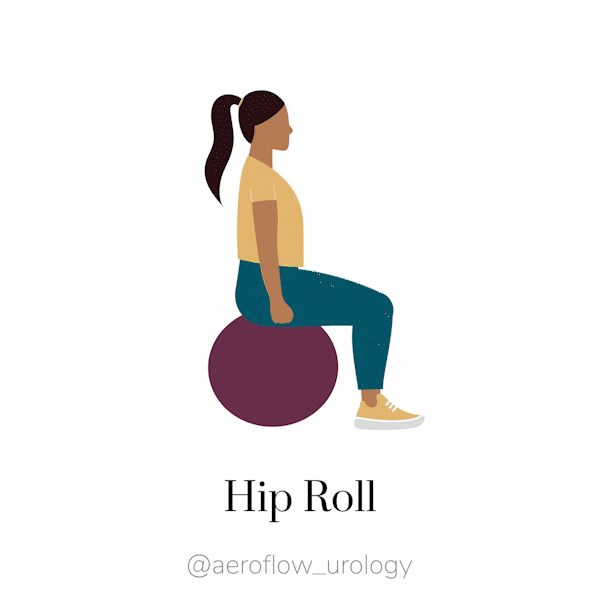

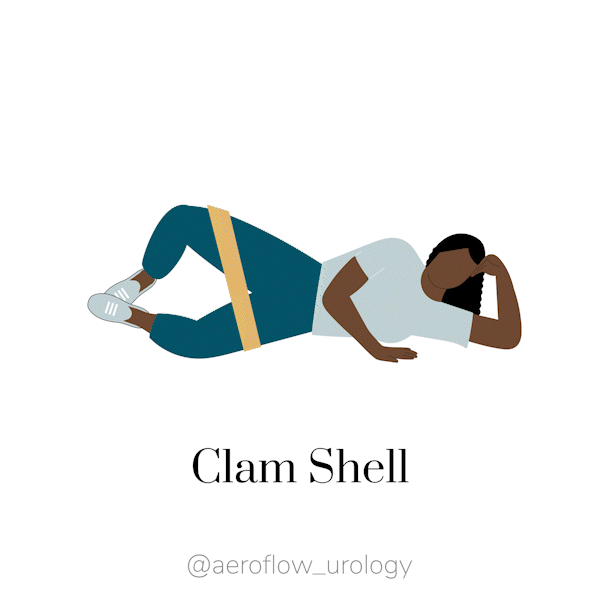

Clamshells (4 sets, 10 reps)
How to:
- To do a clamshell, begin by laying on your side. Prop your head up with your elbow on the floor and your head in your hand. Place your opposite hand comfortably on the ground in front of you.
- Place a resistance band a few inches above your knees on the lower thigh (you can also do this without a resistance band for a less intense exercise).
- With the resistance band around your lower thigh, open your top leg, imitating a clam opening up. When your leg is open, squeeze your pelvic floor muscles and then return your leg back to the beginning posture.
- After completing 1 set, switch to the opposite side and start from the beginning.
Reverse Clamshells (4 sets, 10 reps)
How to:
- For a reverse clamshell, begin similarly to the regular clamshell by laying on one side with your arm supporting your head.
- Place your resistance band around your ankles.
- Move your top ankle and foot up and away from the other ankle, forming an open clam shape with your feet.
- When your feet and ankles are open completely, squeeze your pelvic floor muscles.
- Place your feet back together and proceed with the remaining reps.
- Switch to the opposite side and proceed with the same amount of reps, remembering to engage your pelvic floor muscles.


Free Bladder Control Products Through Medicaid
Many exercises engage the pelvic floor muscles, but the above exercises are a great place to start. Remember: Even if you can only do a few pelvic floor exercises daily, that is something to be proud of!
If you need extra protection in addition to your pelvic floor exercises, you may be eligible to receive women's bladder control products at no cost through your insurance. Check your eligibility through our secure Eligibility Form, and one of our Continence Care Specialists will contact you in 1-2 business days to inform you of your coverage.
If you qualify for free products, we'll send you free product samples so you can find the best fit for your unique body shape and level of leakage. You'll also receive your supplies in the mail in discreet, unmarked boxes every single month for free! At the end of each month, you'll get a friendly reminder through text message or email when it's time to reorder your products so you don't run out.
Disclaimer
Information provided on the Aeroflow Urology blog is not intended as a substitute to medical advice or care from a healthcare professional. Aeroflow recommends consulting your healthcare provider if you are experiencing medical issues relating to incontinence.


